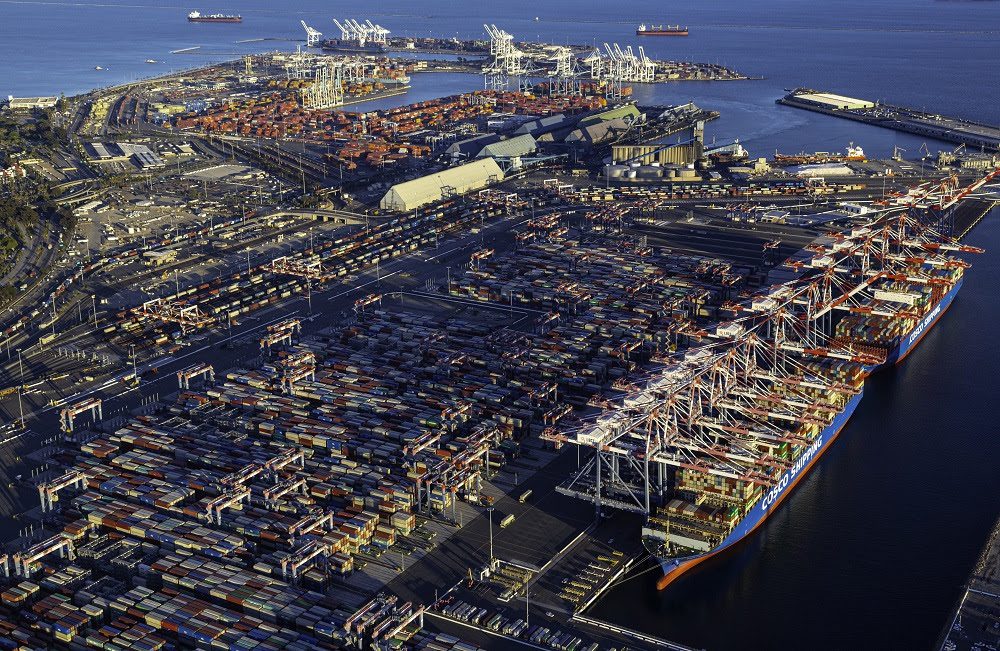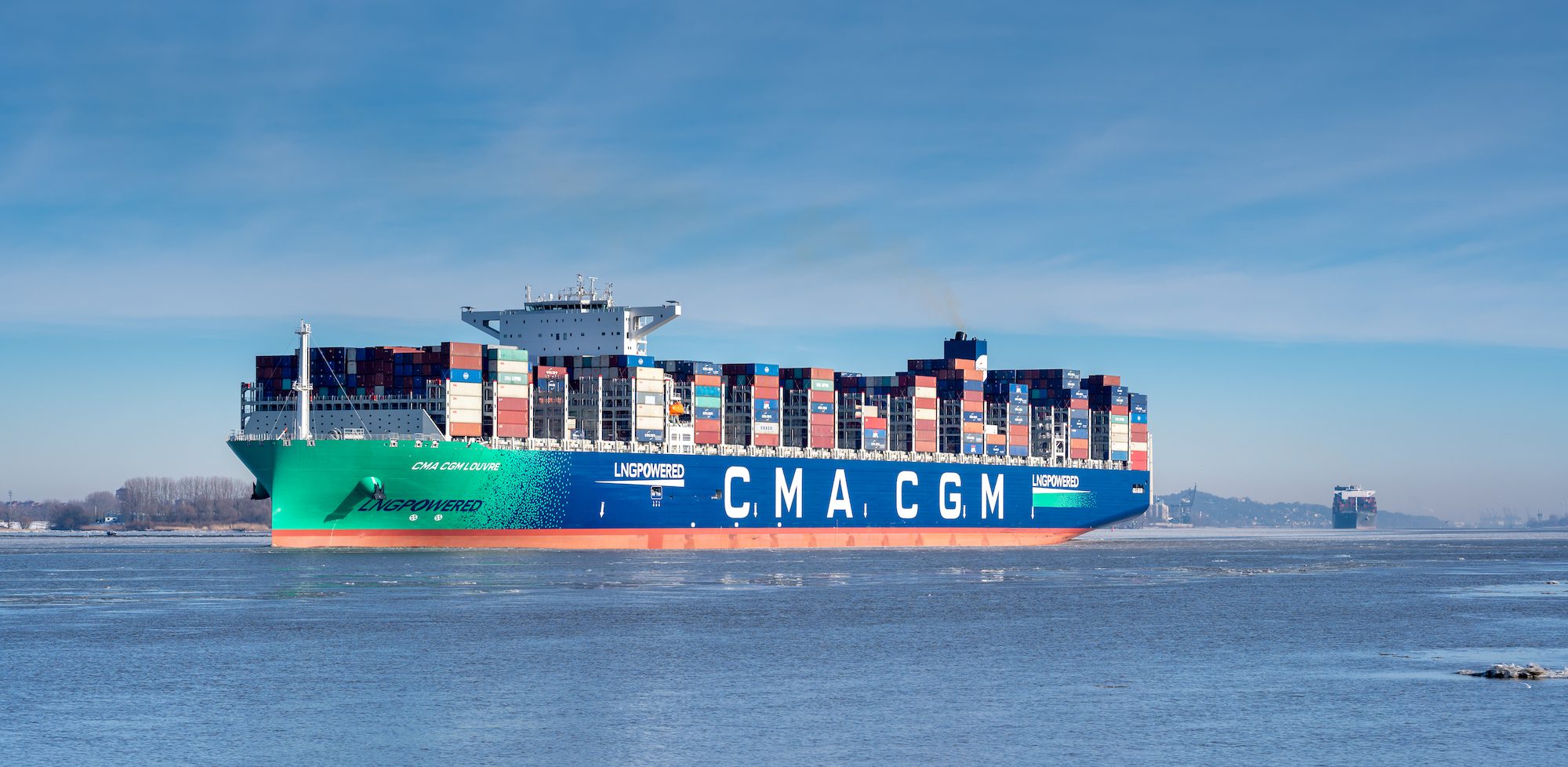In a move that underscores the growing momentum behind advanced nuclear technologies, Alphabet’s Google announced a groundbreaking agreement on Monday to purchase power from multiple small modular reactors (SMRs).
This corporate deal, a world-first of its kind, signals a new era for clean energy, where nuclear power is positioned as a pivotal player in meeting the soaring electricity demands driven by artificial intelligence (AI). Yet, the implications of this shift extend beyond the tech sector; the maritime industry is also exploring nuclear energy as a potential game-changer in its quest for decarbonization.
Google’s Bold Move Toward Nuclear Power
For over a decade, Google has been at the forefront of adopting renewable energy, from wind and solar to geothermal power, as part of its ambitious goal to achieve carbon-free energy. Its latest move into nuclear power, through a partnership with Kairos Power, represents a significant milestone in its clean energy trajectory. The agreement aims to bring Kairos Power’s first SMR online by 2030, with additional reactors expected by 2035. The ultimate goal is to add up to 500 megawatts (MW) of carbon-free power to the U.S. grid, supporting Google’s energy needs and contributing to broader national decarbonization efforts.
The choice of nuclear energy, especially SMRs, is strategic. These advanced reactors promise to overcome many challenges associated with traditional nuclear power plants. Their smaller, modular design enables faster construction timelines and flexibility in deployment, allowing nuclear energy to be utilized in diverse locations and integrated into existing grids more seamlessly. Kairos Power’s molten-salt-cooled reactors further add to their appeal, offering inherent safety features and an ability to operate at lower pressures, which simplifies design and reduces costs.
For Google, the shift to nuclear energy is driven by the need for reliable, round-the-clock power to fuel its AI operations, which require significant computational resources. As AI applications expand in fields like scientific research, autonomous vehicles, and healthcare, the energy required to support these technologies is increasing. By embracing SMRs, Google aims to meet these demands sustainably while setting an example for other corporations to follow suit in adopting advanced clean energy technologies.
The Maritime Industry’s Nuclear Ambitions
While Google is pioneering nuclear power use in the tech sector, the maritime industry is charting a similar course. With global shipping under pressure to reduce its carbon footprint, nuclear propulsion is emerging as a promising solution.
The American Bureau of Shipping (ABS) in 2023 conducted a groundbreaking study with Herbert Engineering (HEC) examining the use of nuclear propulsion on two vessel types. The study modeled the use of nuclear reactors on a simulated 14,000 TEU containership and Suezmax tanker. For the containership, two 30MW fast reactors were found to increase cargo capacity and speed, eliminating refueling needs for 25 years. The Suezmax vessel, fitted with four 5MW microreactors, saw increased speeds but reduced cargo capacity, requiring one refuel in 25 years. Both designs achieved zero CO2 emissions. ABS has also previously collaborated with the U.S. Department of Energy (DOE) to investigate obstacles to implementing advanced nuclear propulsion on commercial vessels.
In parallel, Lloyd’s Register (LR) and CORE POWER have embarked on a joint study with Maersk to explore the feasibility of nuclear-powered container ships. This study aims to address the regulatory frameworks and safety protocols required to bring fourth-generation nuclear reactors to the shipping industry. The study’s findings could shape the future of emissions-free maritime transport, providing a roadmap for other shipping companies to adopt nuclear power as part of a multi-fuel strategy to achieve net-zero emissions.
According to Christopher J. Wiernicki, ABS Chairman and CEO, nuclear energy’s potential in the maritime sector extends beyond powering individual ships. Earlier this month, ABS unveiled the industry’s first comprehensive rules for floating nuclear power plants, a critical step toward making nuclear-powered vessels a reality. During a recent forum with the Idaho National Laboratory (INL), ABS emphasized the potential of nuclear power to revolutionize not only ship propulsion but also to integrate clean energy generation across multiple sectors.
“Nuclear energy can link energy demands across the electric, industrial and shipping transportation sectors to optimize energy generation and use, maintain grid reliability and support decarbonization of shipping and industry. Not to mention its vast potential for the production of clean fuels such as e-ammonia and e-hydrogen,” Wiernicki said.
Technological Parallels and the Path Forward
Both Google’s agreement and the maritime industry’s explorations highlight the potential of SMRs to provide clean, reliable energy in sectors that have historically been challenging to decarbonize. The key advantage lies in the modular design of these reactors. Unlike traditional nuclear power plants, which can take over a decade to build, SMRs are designed for more rapid deployment. This flexibility allows them to be used in diverse settings, from powering Google’s data centers to propelling massive container ships across oceans.
In the shipping industry, this shift is already in motion. Newcleo, a nuclear technology company, has partnered with Italy’s Fincantieri and RINA to develop lead-cooled SMRs suitable for maritime use. Their reactors promise high efficiency, fewer refueling requirements, and the ability to integrate seamlessly with existing vessel designs. These advancements could enable ships to operate on nuclear power for extended periods, drastically reducing greenhouse gas emissions and operational costs.
“Advanced or small modular reactors address many of the issues traditionally associated with nuclear for commercial maritime use, with enhanced safety and efficiency, reduced cost and waste and proliferation prevention,” said ABS’ Wiernicki upon releasing the 2023 study.
Yet, challenges remain. For both Google and the maritime sector, the successful deployment of SMRs will depend on navigating complex regulatory landscapes. The development of safety standards, licensing protocols, and collaboration with local communities is crucial to gaining public trust and ensuring that nuclear power can be adopted at scale. This is especially true for the maritime industry, where safety concerns and the need for international regulatory alignment present significant hurdles.
“Many questions need to be answered and it is critical that industry evaluate these technologies with a laser focus on safety,” Wiernicki said.
The Economic and Environmental Imperative
The economic benefits of nuclear power extend beyond energy production. The U.S. Department of Energy estimates that reaching 200 gigawatts (GW) of advanced nuclear capacity by 2050 could create up to 375,000 high-paying jobs. For communities across the U.S., investments in nuclear energy mean new opportunities in a growing sector. Similarly, for ports and coastal regions looking to host floating nuclear power plants or nuclear-powered vessels, the technology could stimulate economic growth and provide a competitive edge in the global shipping market.
Environmentally, nuclear energy offers a path to achieving deep decarbonization. Unlike solar and wind, which are subject to weather variations, nuclear power can deliver consistent, carbon-free energy 24/7. This reliability makes it an ideal partner for renewable energy sources, helping stabilize grids and reduce reliance on fossil fuels. For Google, this stability is essential to maintaining the uninterrupted power required by its AI infrastructure. For the maritime industry, nuclear power represents a potential solution to meet the International Maritime Organization’s stringent emission reduction targets, providing the regulatory framework to reduce emissions from a sector that currently contributes 3% of global carbon emissions.
A Shared Vision for a Nuclear Future
The simultaneous advancements in nuclear power across tech and maritime sectors underscore a shared recognition: that the path to a sustainable future may very well include a return to nuclear energy, but with a modern twist. Google’s deal with Kairos Power and the maritime industry’s push for nuclear propulsion reflect a willingness to embrace innovation and address climate challenges with bold, technology-driven solutions.
As the world moves toward decarbonization, these efforts illustrate how industries can leverage advanced nuclear technologies to meet the dual goals of economic growth and environmental sustainability. In doing so, they not only redefine their energy landscapes but also set a precedent for other sectors to follow. Nuclear energy, once dismissed due to safety concerns and high costs, is now reemerging as a viable and essential component of the global energy mix—poised to power not just the digital economy, but the ships that carry it.

 Join The Club
Join The Club










